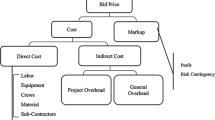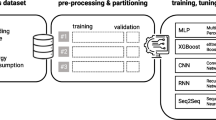Abstract
Planning and forecasting wood resources implies a challenging analysis, which has a direct impact on planning human resources, production timeline, as well as stock management of wooden assortments, which requires a complex data analysis taking into account all inputs that define the yield of wooden material. This paper includes an analysis of monthly time series data from 1991 to 2015 which can be characterized as long time dependence data. In recent years, artificial neural networks have become a popular tool for time dependence data treatment. Therefore, a prediction of monthly requirements of treated wood is performed by developing a new type of neural network in this research. The nonlinear autoregressive model with exogenous inputs (NARX) is used as a foundation of a new network. NARX is a type of recurrent neural network which is a very effective tool for approximation of any nonlinear function, especially ones which could occur during a nonlinear time sequence prediction. The main contribution of this paper is the introduction of an artificial endocrine factor inside the standard NARX structure. The developed ENARX model provides an extra sensitivity of the network to environmental conditions and external disturbances, as well as its improved adaptive capability. The proposed network shows better forecasting performances compared to the default NARX network, thus establishing itself as an excellent prediction tool in the field of wood science, engineering and technology.












Similar content being viewed by others
References
Ampazis N, Perantonis S (2000) Levenberg–Marquardt algorithm with adaptive momentum for the efficient training of feedforward networks. In: Proceedings of the IEEE-INNS-ENNS international joint conference on neural networks, Como, Italy, 24–27 Jul, pp 126–131, IEEE
Andrew CC (1997) Comparing neural networks and regression models for ozone forecasting. J Air Waste Manag Assoc 47(6):653–663
Azadeh A, Ghaderi SF, Sohrabkhani S (2008) Annual electricity consumption forecasting by neural network in high energy consuming industrial sectors. Energy Convers Manage 49(8):2272–2278
Chen D, Wang J, Zou F, Yuan W, Hou W (2014) Time series prediction with improved neuro-endocrine model. Neural Comput Appl 24(6):1465–1475
Diaconescu E (2008) The use of NARX neural networks to predict chaotic time series. WSEAS Trans Comput Res 3(3):182–191
Diaz-Balteiro L, Casimiro Herruzo A, Martinez M, Gonzalez-Pachon J (2006) An analysis of productive efficiency and innovation activity using DEA: an application to Spain’s wood-based industry. For Policy Econ 8(7):762–773
Dimic M, Pavlovic A (2016) Actuality and perspectives of the wood industry development in Western Balkan countries. Int J Qual Res 1(10):131–142
Dougherty M (1995) A review of neural networks applied to transport. Transp Res Part C 3(4):247–260
Fadlalla A, Lin CH (2001) An analysis of the applications of neural networks in finance. Interfaces 31(4):112–122
Geem ZW, Roper WE (2009) Energy demand estimation of South Korea using artificial neural network. Energy Policy 37(10):4049–4054
Gonzalez R, Houllier F, Lemoine B, Pignard G (2001) Forecasting wood resources on the basis of national forest inventory data. Application to Pinus pinaster Ait. in southwestern France. Ann For Sci 58(7):785–802
Hatalis K, Pradhan P, Kishore S, Blum RS, Lamadrid AJ (2014) Multi-step forecasting of wave power using a nonlinear recurrent neural network. In: IEEE PES General Meeting 2014, National Harbor, MD, 27–31 July, pp 1–5, IEEE
Kaastra I, Boyd M (1996) Designing a neural network for forecasting financial and economic time series. Neurocomputing 10(3):215–236
Kazemi M, Niknafs A, Ranjbar V, Forouharfar A (2011) Application of neural networks in forecasting business and managerial processes in comparison with nonlinear models (case study: Iran’s wood industry). Int J Soc Econ Res 1(1):220–225
Kolehmainen M, Martikainen H, Ruuskanen J (2001) Neural networks and periodic components used in air quality forecasting. Atmos Environ 35(5):815–825
Konstantinos I, Arabatzis G, Koutroumanidis T, Apostolidis G (2011) Forecasting of cut Christmas trees with artificial neural networks (ANN). In: Proceedings of the international conference on information and communication technologies for sustainable agri-production and environment, Skiathos, 8–11 September, pp 507–518
Koutroumanidis T, Konstantinos I, Arabatzis G (2009) Predicting fuelwood prices in Greece with the use of ARIMA models, artificial neural networks and a hybrid ARIMA-ANN model. Energy Policy 37(9):3627–3634
Kumar D, Gupta AK, Chandna P, Pal M (2015) Optimization of neural network parameters using Grey–Taguchi methodology for manufacturing process applications. Proc Inst Mech Eng Part C J Mech Eng Sci 229(14):2651–2664
Lin T, Horne B, Tino P, Giles C (1996) Learning long-term dependencies in NARX recurrent neural networks. IEEE Trans Neural Netw 7(6):1329–1338
Maier HR, Dandy GC (2000) Neural networks for the prediction and forecasting and forecasting of water resource variables: a review of modelling issues and applications. Environ Modell Softw 15:101–124
Martinelli DR, Teng H (1996) Optimization of railway operations using neural networks. Transp Res C Emerg Technol 4(1):33–49
Milojković M, Antić D, Milovanović M, Nikolić SS, Perić S, Almawlawe M (2015) Modeling of dynamic systems using orthogonal endocrine adaptive neuro-fuzzy inference systems. J Dyn Syst Meas Control 137(9):091013-091013-6. doi:10.1115/1.4030758
Negnevitsky M (2005) Artificial intelligence: a guide to intelligent systems. 2nd edn. Pearson Education Limited, Harlow
Nuutinen T, Hirvelä H, Hynynen J et al (2000) The role of peatlands in Finnish wood production—an analysis based on large-scale forest scenario modelling. Silva Fennica J 34(2):131–153
Pham DT, Soroka AJ, Ghanbarzadeh A, Koç E, Otri S, Packianather M (2006) Optimising neural networks for identification of wood defects using the bees algorithm. In: Proceedings of 4th IEEE international conference on industrial informatics, Singapore, pp 1346–1351
Sauze C, Neal M (2013) Artificial endocrine controller for power management in robotic systems. IEEE Trans Neural Netw Learn Syst 24(12):1973–1985
Siegelmann HT, Horne BG, Giles CL (1997) Computational capabilities of recurrent NARX neural networks. IEEE Trans Syst Man Cybern Part B Cybern 27(2):208–215
Siegelmann H, Kagan E, Ben-Gal I (2014) Honest signaling in the cooperative search. In: IEEE 28th convention of electrical and electronics engineers in Israel, pp 1–5
Sousa SIV, Martins FG, Alvim-Ferraz MCM, Pereira MC (2007) Multiple linear regression and artificial neural networks based on principal components to predict ozone concentrations. Environ Modell Softw 22(1):97–103
Timmis J, Neal M, Thorniley J (2009) An adaptive Neuro-endocrine system for robotic systems. In: Proceedings of the IEEE workshop on robotic intelligence in informationally structured space, Nashville, pp 129–136
Timmis J, Murray L, Neal M (2010) A Neural-endocrine architecture for foraging in swarm robotic systems. In: Gonzales JR, Pelta DA, Cruz C, Terrazas G, Krasnogor N (eds) Nature inspired cooperative strategies for optimization (NICSO 2010), Studies in Computational Intelligence, vol 284. Springer, Berlin, pp 319–330
West D, Dellana S, Qian J (2005) Neural network ensemble strategies for financial decision applications. Comput Oper Res 32(10):2543–2559
Widrow B, Rumelhart D, Lehr MA (1994) Neural networks: applications in industry, business and science. Commun ACM 37(3):93–105
Williams B, Hoel L (2003) Modelling and forecasting vehicular traffic flow as a seasonal ARIMA process: theoretical basis and empirical results. J Transp Eng 129(6):664–672
Yildirim I, Ozsahin S, Okan OT (2014) Prediction of non-wood forest products trade using artificial neural networks. J Agric Sci Technol 16:1493–1504
Author information
Authors and Affiliations
Corresponding author
Rights and permissions
About this article
Cite this article
Milovanović, M.B., Antić, D.S., Rajić, M.N. et al. Wood resource management using an endocrine NARX neural network. Eur. J. Wood Prod. 76, 687–697 (2018). https://doi.org/10.1007/s00107-017-1223-6
Received:
Published:
Issue Date:
DOI: https://doi.org/10.1007/s00107-017-1223-6




